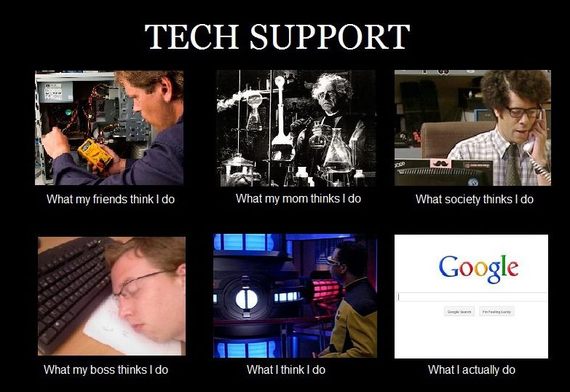Plug, Play, and Pray
By Kathleen McCarthy
07-10-2015
Help for the Accidental Technologist in a rapidly changing landscape
We are endlessly bombarded by the hype of the technology market – the newest device, the latest app, the ever-expanding cloud. It is all so bright and shiny and set to a musical score that makes us believe this next purchase will solve all of our technology needs, and we jump. Taking such a jump can be exhilarating when done for our own personal consumption, but when “the accidental technologist” is asked to do so for our organization, the leap can be overwhelming.
Accidental Technologist (noun): a person who, without any formal training has somehow become the go-to person in their organization for technology troubleshooting. Perhaps you did a great job clearing a paper jam out of the copier or suggested to your colleague that they reboot their computer when it was acting “glitchy.” Somehow, these actions caught the attention of your colleagues and you were swiftly tagged as the de facto IT person.
 Studies such as the most recent NTEN Technology Staffing and Investment Report indicate that regardless of organizational size, the median technology budget as a percentage of total operating budget ranges from 1.4% to 2%. Meanwhile, 78% of organizations described themselves as barely maintaining or failing to maintain their technology systems. Technology has become a critical component of an organization’s backbone, and yet the accidental technologist is faced with making big decisions in an ever-changing marketplace with limited resources and often little time and access to expertise.
Studies such as the most recent NTEN Technology Staffing and Investment Report indicate that regardless of organizational size, the median technology budget as a percentage of total operating budget ranges from 1.4% to 2%. Meanwhile, 78% of organizations described themselves as barely maintaining or failing to maintain their technology systems. Technology has become a critical component of an organization’s backbone, and yet the accidental technologist is faced with making big decisions in an ever-changing marketplace with limited resources and often little time and access to expertise.
Over the past five years, we at the Knott Foundation have seen requests for technology-related support increase dramatically with the explosion of technology in classrooms and the rise of the importance of social networking and responsive design in fundraising for nonprofits. In response, our technology giving has grown to more than $2.5 million during that period, averaging slightly above $500,000 each year. Many of these awards have been given to schools and nonprofits who are lacking formally trained IT staff.
Through our work, we have learned a tremendous amount about the challenges faced by and the resources that exist to help guide “the accidental technologist” with technology planning, purchasing, and the many innovative approaches taken to make informed choices, save money without offsetting impact, and strengthen their organization’s backbone.
Sites such as TechSoup’s Cookbook and blog resources such as The Nine Steps of Planning a Successful Technology Project and Mobile Beacon’s Tech Planning Blog can be of tremendous assistance when trying to develop a right-sized, needs-based technology plan. Schools looking to invest in a one-to-one computing initiative can read Ten Considerations for Funding or Implementing Programs and opportunities to “try before you buy” can be found through EdSurge. Sites such as TechSoup, Digital Wish and Good360 can help schools and nonprofits secure hardware and software for dramatically reduced prices, or even for free. TechSoup notably has a section on donations and resources for religious organizations.
Hardware and software in-hand, the ability of technology to innovate in the workspace is reliant upon taking the time to train staff and create opportunities for professional development. Sites such as Lynda.com and Atomic Learning, for a fee, provide access to thousands of professional development and technology training opportunities with the click of a mouse. Idealware is a great site for information on a wide range of technology training, purchasing, and grantwriting, and you can even find helpful trainings on YouTube. Many of our grantees also create their own in-house video libraries by taping formal trainings provided by vendors or peers for use by new staff or returning staff looking to brush up on skills.
And, for the truly DIYs out there, ingenious ideas such as using igloo coolers to transport iPads instead of carts, converting cubby storage units into charging stations, and using flexible PVC pipe fittings to create iPad stands for students in wheelchairs can not only help save money, but may also help forge a community of excited accidental technologists that turn your organization into a group of passionate, tech savvy intentional futurists!
